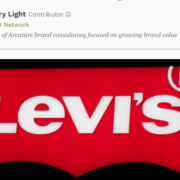Peloton’s Three Marketing Must-Do’s
Apparently, Peloton is losing its shine. Press reports indicate that Peloton’s shares are down as are investors’ hopes. Now that cities and towns are open, why workout from home anymore?
Peloton will need to work harder to generate new customers. And, the brand could risk losing some of its current customers.
Answers to Peloton’s dilemma are not as simple as home workout versus gym workout. Peloton came on the scene well before Covid-19. Peloton provided a solo at-home workout within an avid online community. With the advent of coronavirus lockdowns, in-home physical activity became critical. All Peloton did was leverage the lockdowns. The schedule of classes grew to include outdoor runs and walks, yoga, meditation, Pilates, barre, stretching, core, weight training, bodyweight training, bike and tread bootcamps and dance cardio. Peloton added pre- and post-natal classes. The brand also segued into apparel and accessories.
Fewer sign-ups with purchases of its hardware cannot be blamed completely on the waning pandemic. Peloton’s marketing could use an improvement.
Here are three marketing must-do’s that Peloton should implement to get its mojo back with customers and potential customers:
1. Stop The Excessive Price Marketing
Peloton communications have been price-focused, not brand-focused. Peloton has been luring customers with incentives. This has serious implications for brand loyalty. Brand loyalty cannot be bought with bribes. True, the communications show lots of different people on Peloton cycles and treads or people taking off-equipment, mat classes. But, the main message point is that the cycles and treads are now cheaper. Making the brand’s experience cheaper does not build brand strength. Reminding people that a brand is affordable is important. But, emphasizing price alone damages brands. Peloton’s communications should say “Great brand at a great price” instead of this is a great deal. Unfortunately, Peloton’s recent messaging has not emphasized the “great brand”. The message has been “We are on sale. This is a great deal.”
2. Connect With The Brand’s Purpose
Peloton’s communications have not connected with Peloton’s core mission. A brand must be in sync with its desired spirit. Mission statements express the brand’s intent, its purpose. Peloton’s prospectus offered the following: “Peloton uses technology and design to connect the world through fitness, empowering people to be the best version of themselves anywhere, anytime.” Clearly the instructors are aligned. You understand this if you actually take classes. But, for a prospective customer, the brand’s purposeful message is unstated. There are probably a lot of people who would appreciate the opportunity to participate in Peloton’s world view. Peloton’s uplifting, positive, you-can-do-it message is not communicated to the uninitiated. It is a best-kept secret.
Describing Peloton’s business model in a recent Harvard Business Review article, the authors conclude that even though participants are in different locations, participants exercise “…with a virtual community of peers and instructors” and “… the brand’s meaning extends beyond what they would experience with the bike alone.”
This is true. But in order to increase owners/subscribers, Peloton must share its meaning with prime prospects. Peloton’s meaning has to be meaningful to both users and like-minded others.
3. Maximize The Paradox of Inclusive Individuality
People want to be seen and respected as individuals. At the same time, people want to belong so something bigger than themselves. People want both independence and interdependence at the same time. People savor their uniqueness while wanting to share that uniqueness with like-minded others. People cherish their particular characters and their commonalities with others. They want to respond as individuals and they want to share as members of a community of common interests. “I am an individual with unique wants and needs. But I am not alone. I belong to communities of people who want the same things as I do.”
This is what Peloton does really well. This is what Peloton is: the epitome of Inclusive Individuality. And, yet, you would not know this unless you were actually part of the Peloton family. There is no relevant distinctive messaging around this critical connective social force. Peloton must manage its brand messaging differently, articulating that its brand experience promises to respect, encourage and strengthen individuality while belonging to a supportive family. Peloton is the ideal place where people are praised for who they uniquely are and what they can uniquely do while belonging to a group that shares their distinctiveness. Peloton’s messaging lacks this compelling, powerful promise of inclusive individuality. Going to a gym pales in comparison.
No one really knows the extent to which people’s attitudes and behaviors changed during the past 20 months. Peloton needs to determine what the actual causes are for fewer signups. But, there is no question that needs to be marketing improvement.
Peloton has a lot to give. Implementing the three must-do’s will allow Peloton to demonstrate that it has more to give than exercise equipment, physical fitness, music and leggings. By connecting to its stated purpose and emphasizing its inclusive individuality, Peloton will be on its way to becoming a great brand that is a great value.









